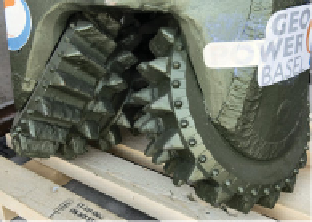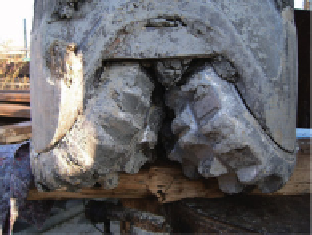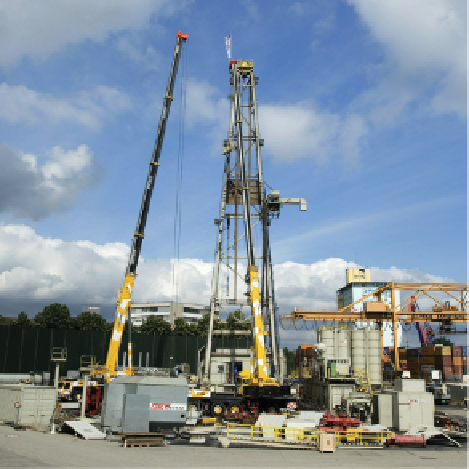Environmental Engineering Reference
In-Depth Information
material in the outer area between the bit and the borehole to the surface and at the
same time cools the drill. The drilling drive can also be used to change the bore
from its vertical position. This enables the boreholes that are sited close together on
the surface to exploit a larger area underground.
Figure 10.5
Left: New and used drill bits. Right: Structure of a derrick.
Photos: Geopower Basel AG.
Depending on the conditions underground, the walls of a borehole can become
unstable. Steel tubes are inserted at large intervals and stabilized with a special
cement to prevent the walls from collapsing. The drilling is then continued with a
smaller drill bit. For many years the very high salt content of thermal water caused
serious problems at many drilling sites. Salt attacks metal and very quickly causes
corrosion. Today the use of specially coated materials has eliminated this problem.
The deepest drilling ever carried out was for research purposes on the Kola penin-
sula in Russia. This site had a depth of 12km. In Germany the continental deep
geothermal drilling in the Oberpfalz region reached a depth of 9.1 km. These drilling
depths represent the technical limit today. The conditions at depths of 10km are
extreme, with temperatures of more than 300 °C and pressures of 3000 bars. Under
these conditions rock becomes plastic and viscous.
Much shallower depths are required for geothermal use. The maximum drilling
depth currently planned for large-scale sites is around 5km. However, the tech-
niques employed even at these depths are complicated and therefore expensive.
A distinction is made between the following in the exploitation of geothermal
deposits:



